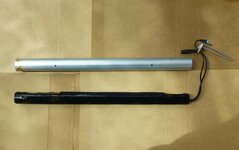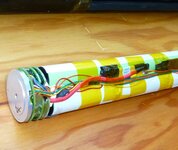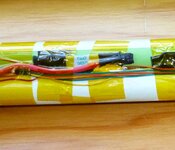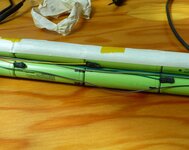Hello all, I'm a New member and it was suggested that I introduce myself. So...
I live in Western Washington State, on a small island. I moved here 35 years ago, back when land on island was affordable by mere mortals. It took four years but I built my home myself out of pocket. I suspect I am older than most here, but while I may be old, I'm not dead yet. Bicycles have been a significant part of my interests and as I get older ebikes are becoming a viable option. I have toured on bicycles in Europe, spending Septembers for three years touring in France and Germany. In 2015 I met a French gentleman on Eurovelo 6 who had just received an ebike as a gift from his son. He was 80 and had for many summers toured Eurovelo 6 (also known as Loire a' Velo) and the new bike was a way of continuing his cycling. A seed was sown.
I recently acquired a Faraday Porteur S at a Goodwill for a pittance. It was too good a deal to pass up...the tires alone were worth more than they were asking for the ebike. Of course there are issues...otherwise it wouldn't have been there. It has a dead battery and my search for information led me to this forum via postings from a member...Darthracing. His response from members here suggested that perhaps this would be a good source for advice and suggestions concerning the Faraday as well as other ebike options. Bests, Wiley1
I live in Western Washington State, on a small island. I moved here 35 years ago, back when land on island was affordable by mere mortals. It took four years but I built my home myself out of pocket. I suspect I am older than most here, but while I may be old, I'm not dead yet. Bicycles have been a significant part of my interests and as I get older ebikes are becoming a viable option. I have toured on bicycles in Europe, spending Septembers for three years touring in France and Germany. In 2015 I met a French gentleman on Eurovelo 6 who had just received an ebike as a gift from his son. He was 80 and had for many summers toured Eurovelo 6 (also known as Loire a' Velo) and the new bike was a way of continuing his cycling. A seed was sown.
I recently acquired a Faraday Porteur S at a Goodwill for a pittance. It was too good a deal to pass up...the tires alone were worth more than they were asking for the ebike. Of course there are issues...otherwise it wouldn't have been there. It has a dead battery and my search for information led me to this forum via postings from a member...Darthracing. His response from members here suggested that perhaps this would be a good source for advice and suggestions concerning the Faraday as well as other ebike options. Bests, Wiley1





